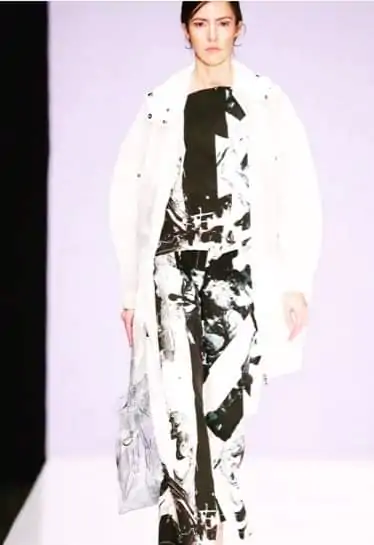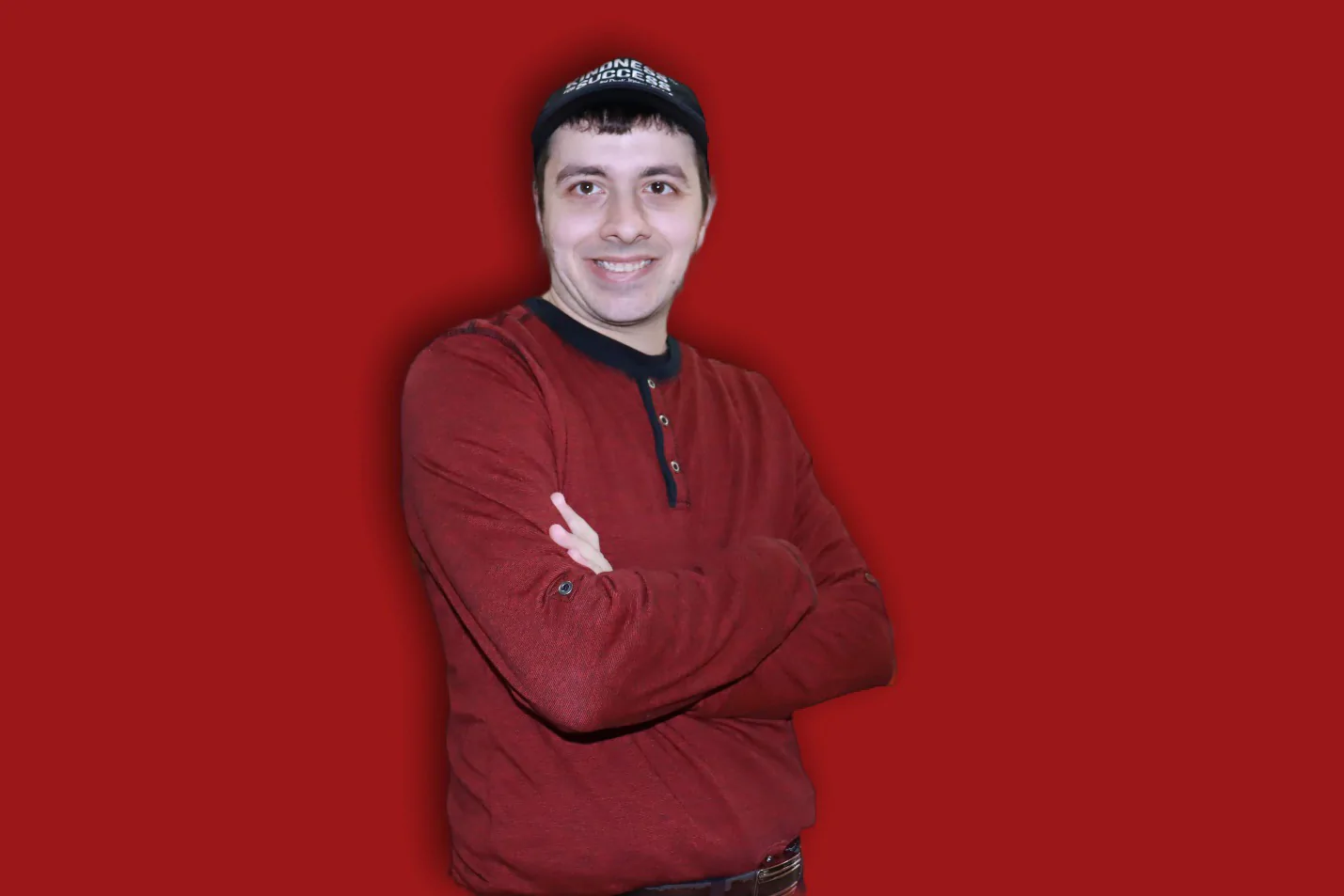Fashion-revolution of a young eco-designer from Russia

About 30 people graduate from the British Higher School of Design in Russia every year. Some receive invitations from major fashion houses, and others immerse themselves in creating brands and sewing collections under their names. Among the distinguished graduates of the famous British school, who could break through to the world podium, take part in New York Fashion Week, enter the list of nominees for the LVMH Prize, and even make a real eco-revolution in the fashion industry. We decided to talk to the Russian designer Elena Denisova who established her own Helen Stracta brand just a year after her graduation from the design school, to become a real expert in recycled material and a founder of innovative textile direction.
Elena, a staggering career high! How did you do it
Thank you. The conceptual direction I chose and the high level of my graduation collection opened the doors to the top Russian shows and world fame for me. Last year my collection was selected as the best graduation work among the entire course “Fashion Design” 2016 for presentation at Mercedes-Benz Fashion Week Russia 2016. It was my finest hour – Helen Stracta announced itself loudly and set the course for developing ecological direction within the global fashion industry. After the debut show, my name became known to the general public, and I began to receive the first offers for collaboration. Some textile factories, both Russian and foreign, invited me, as an eco-designer, to give training lectures on technological fabrics and textures for specialists in their textile departments. It was an accurate recognition. Trusting my intuition and inner desire to do really important things, I realized that I was moving in the right direction, my work received the highest marks, and I had something to teach others.
Helen Stracta – where did the name come from?
While working on my thesis, I traveled around Iceland, a fantastic place untouched by civilization. Nature, its natural textures, and harmonious combinations were reflected in my first collection. Since childhood, I have been attracted to natural textures: my grandfather was a woodcarver, and my grandmother was famous for her talents in the Khokhloma painting. My father was a master of ironwork, and my mother studied weaving. I inherited my love of weaving and design from her, and the textural features of the wood, clay, and ironwork created by my ancestors are forever imprinted in my memory. It was natural, in harmony with nature, beautiful, eco-friendly, and resonated with me. I have always followed the path of creation. During my studies in design school, I was able to feel the design direction in which I would like to develop – recycled materials and structured fabrics. And in the name of my brand, I wanted to reflect this concept. So, the English “Structure” (structure, texture, fabric) and my name Helen (Elena), united into the brand Helen Stracta, which presents primary designer collections of technological and durable materials.
What was unique about your first collection?
Fabrics. The collection’s core was classic shirts, sundresses, pantsuits, shirt dresses, and skirts made of metalized cotton, polyurethane mesh, Japanese washi paper, and membrane fabrics. My graduation collection is not fleeting fashion trends, not short-lived splashes of this color or cut. These are basic models of women’s wardrobes, sewn from environmentally friendly wear-resistant materials and able to serve their owners for many years without losing shape and color.
But the trend for eco-friendly fashion is not new. What caused such a stir around Helen Stracta since you have just started in the fashion world?
Yes, the term “eco-fashion” has been heard in the fashion industry for many years. The mainly ecological approach of brands and designers was manifested in the refusal to use natural furs and leather, choice of natural fabrics, etc. I concentrated on the two most important directions of ecological fashion. Firstly, it is the sewing of primary collections – the basis of an everyday woman’s closet consists of basic things. This is what women wear most often. The higher quality of these things, the less often women will have to update them – sensible consumption. Secondly, high-tech fabrics and a designer combination of different textures are used. In my collection, I showed what prospects modern textile technologies open for designers. Today we can create stylish and creative things and take care of the environment at the same time. Especially since in Russia today, there are almost no designers who emphasize this. And I have always wanted to be “creative,” to set the vector of development, not just to keep up with the times and fashion, but to create fashion and identify trends. Now, this direction is design work with complicated non-standard materials, innovative technological fabrics, and recycling.
Recycling is reprocessing clothes into new fabrics?
Not only that, but it also includes recycling newly unsold and already used clothing. But first and foremost, we’re talking about recycling as the safest way to dispose garbage. Eco-friendliness and cost-effectiveness are the main arguments for recycling. As a result of a complex technological process of recycling obtained, new synthetic materials can be widely used in the manufacture of clothing.
In the famous Soviet film “Girls,” the main character said that you could make paper and rubber and even get wool for mittens from wood. And I, as a designer of recycled textiles, can surprise you that today plastic alone can be used to make polyester, which is used to make sports uniforms, swimsuits, raincoats, and jackets, nylon (a great alternative to silk), organza, taffeta, fleece, holofiber, sintepon and much more.
Isn’t plastic bad for the environment and fabrics made of it bad for people?
Plastic is harmful if it lies in the soil for decades. Modern recycled materials undergo a thorough multi-step treatment, so they are absolutely safe and non-toxic for the human body. Their disadvantage is that they are sensitive to sunlight and excessive moisture, so that things can wear out faster. In addition, they can only be painted in bright or dark colors, which greatly reduces the choice of shades. Such things are not cheap, which is due to the difficulty and length of recycling.
You said that recycled fabrics are used everywhere. And your collections are unique and inimitable. What is the secret and the revolution?
The secret is in the textures, the structures of the fabric. I don’t just take recycled material and make clothes out of it. I combine different textures, add creative elements, combine natural fabrics with recycled materials, and create handmade fabrics by author’s pattern by cutting and embroidery. And it’s all in a classic manifestation. My clothes are basic yet exclusive.
Elena, tell us about cooperation with factories.

It’s not a secret that by the level of environmental pollution textile industry takes second place after the oil industry: these are both dyeing of fabrics, which pollutes fresh water, and clothes washing when tons of microfiber get into the ocean, and it is equivalent to billions of plastic bottles, and waste from production – vast piles of threads, scraps of fabrics, etc. In addition, we should not forget that tons of textiles are thrown into landfills every year, such as old clothes or out of fashion. Saving the environment in terms of textile production is about reducing the amount of water used in production, abandoning natural wool and leather, avoiding the treatment of fabrics with hazardous chemicals, producing fabrics and materials from rapidly renewable resources, and using recycling. This global topic covers not only the factors of the impact of production on the environment but also the properties of various materials, their production characteristics, the demand in the market, etc. To bring all the aspects to the textile departments and to set the vector of the environmental direction in production, I was invited as an expert to large factories, and I gave lectures for the management there. I have already held two such lectures at a Moscow factory, and once I flew to Tokyo by invitation.
Can you share your plans?
Despite the fame that has fallen on me in one year, you must realize that Helen Stracta is still just beginning its design journey. I have set the bar for myself, the high level I must now meet. It means I must constantly evolve, look for and create something new, adhere to the chosen eco-friendly direction, and discover new ways to implement this concept. I’m in America right now, and I’ve brought a few design images for my private clients for the upcoming Burning Man. Then I am going back to Russia. I’ve already been invited as an expert advisor for young designers at Mercedes-Benz Fashion Week Russia 2017, and I will also participate in several big fashion-industry forums. This is in a global sense… On a more down-to-earth level, in the near future, I will be working on expanding my line of basic clothes. We have already launched the Helen Stracta online store, and it is time to think about branded showrooms in Russia and abroad. So there are a lot of plans, and I will implement them! The main thing is that I have found my vocation. It is close to me and madly interesting, which means that everything will turn out even better than I have made it out to be.




